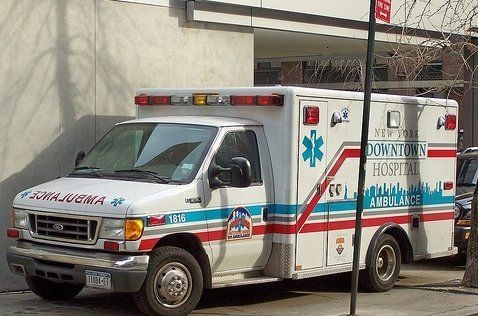
When a surveillance video surfaced on July 1 of Esmin Green collapsing and dying on the emergency room floor of Kings County Hospital's psychiatric ward while hospital workers stood idly by, city and hospital officials were outraged. They immediately fired people deemed responsible for the incident, and promised "significant reforms" to protect psychiatric patients.
My brother Robert has been a patient in the New York city and state mental health systems for the past 46 years, and though outraged -- and saddened -- by the tragedy of Ms. Green's death, I find that, like others I've been talking with who have loved ones in the city and state mental health system, I'm not surprised, either by what happened or by the official response to what happened. Although good care and treatment are increasingly available in city and state mental health facilities, and though the efforts of officials and staff to provide quality care are often inspiring, people with mental illness remain the stepchildren of the medical system.
Ms. Esmin died, alas, for the same reason that the more than 10,000 people with mental illness who live in the city's adult homes -- facilities labeled 'psychiatric flophouses' by the New York Times in their Pulitzer Prize winning series of exposés -- are still, 5 years after their plight became front page news, living in miserable, sub-human conditions. She died, that is, because the simple fact is that mental health facilties are grossly -- and criminally, as in this instance -- underfunded. They are understaffed by overworked and underskilled workers, and no matter the commissions appointed and the reforms promised, past history suggests that once public outrage wanes, little will change.
My brother Robert has been more fortunate than many mental patients. Despite having a history of more than 50 psychiatric hospitalizations, and despite never, for the first three dozen years of his illness, having lived outside a psychiatric facility for more than two years, he has, for the past 9 years, been living in two excellent supervised residences in Manhattan's Hell's Kitchen section. Due to good care, and his own powers of resilience, he has, during these years, had only a single psychiatric hospitalization. But when he asked if he could receive some form of talk therapy, since it had, in the past, proven crucial to maintaining his well-being, the staff psychiatrist replied, as he had to Robert's previous requests, "No resources." And when, more recently, his physical health began to deteriorate, due mostly to drug-induced Parkinsonism -- a result of years of psychiatric medications -- the psychiatrist declared that they didn't have staff adequate to manage his medical problems, and that they would have to transfer Robert to a nursing home. (At Robert's residence, as at most mental health facilities, administrators compete for front line staff with McDonald's; annual staff turnover rates are above 50 percent.) Against Robert's wishes, the staff attempted the transfer, but the nursing homes rejected Robert, claiming that they didn't have the staff to deal with people with histories of psychiatric disabilities.
The video of Esmin Green's death, it turns out, was discovered only because the New York Civil Liberties Union (NYCLU) happened on it during a routine exchange of evidence in a court case. And the HHC had agreed to the exchange in order to settle a lawsuit filed by the NYCLU and others more than a year before that accused Kings County Hospital of keeping psychiatric patients in filthy conditions, of systematically neglecting them, and of drugging them into submission. As the NYCLU's executive director said, "That it took somebody keeling over and dying, and it being captured on videotape, for the city to come to the table in a meaningful way is unconscionable."
Unconscionable yes -- but to those of us who've had loved ones suffer in this system -- not unfamiliar. Nor is the situation endemic to New York. Nationwide, according to the American College of Emergency Physicians, 89 percent of emergency wards transfer psychiatric patients to other facilities each week due to unavailable psychiatric beds at their own hospitals.
What is needed then is clear: fewer words about reforms -- and more funding: more funding for beds, for housing, and to attract and keep dedicated, skilled, and well-trained aides, nurses, social workers, and doctors. What the city and state need to do, that is, is to put their money where their rhetoric is.
Jay Neugeboren's most recent book is 1940. He is the author of 16 other books, including Imagining Robert and Transforming Madness. He serves on the board of the National Alliance on Mental Illness, Pathways to Housing, and several other mental health organizations.